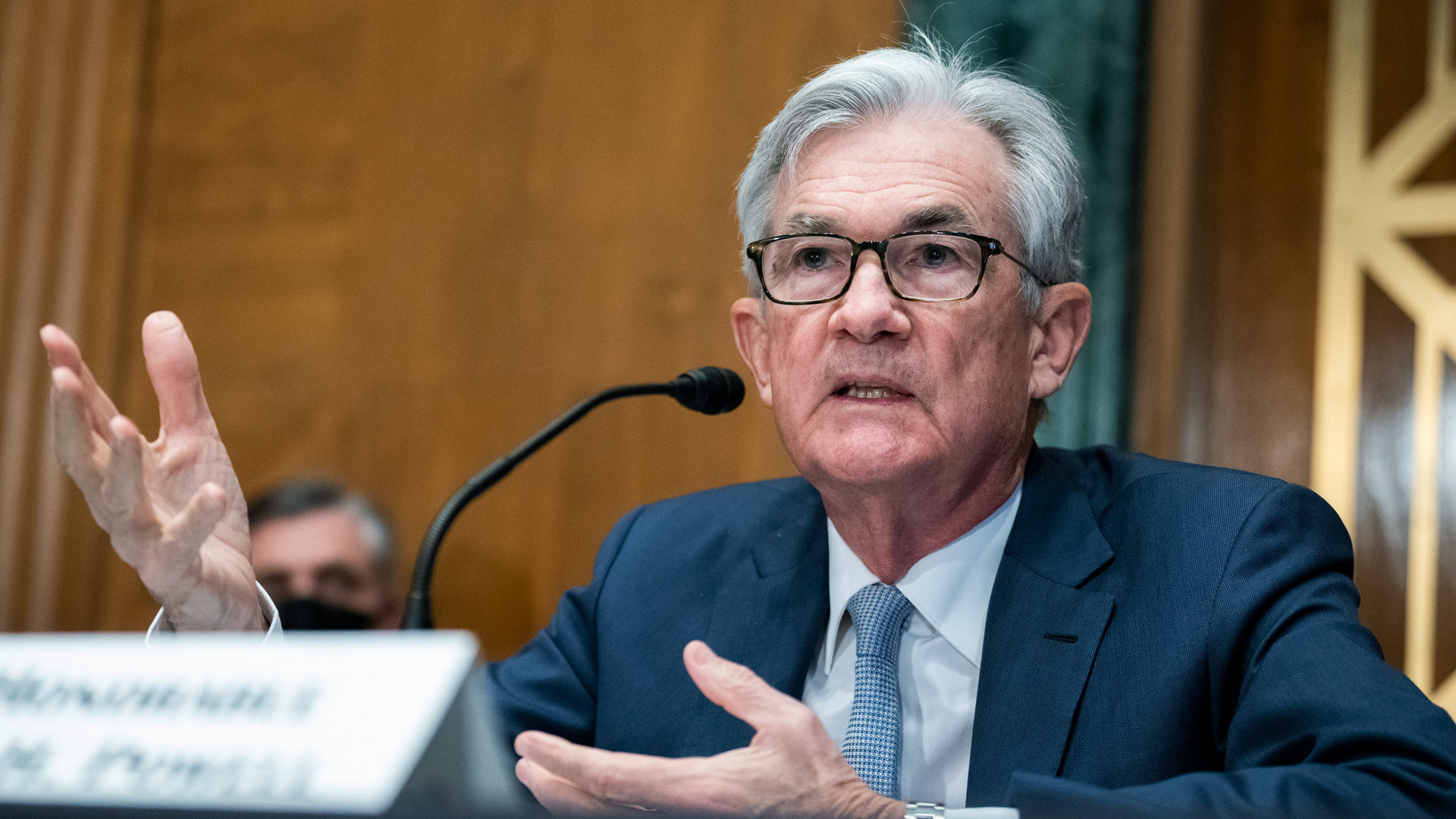The Fed Is Hiking Interest Rates. Should That Change Your Investment Strategy?
The Federal Reserve just approved its biggest interest hike rate since 2000.
On May 4, the Federal Open Market Committee — the Fed’s monetary policymaking body — announced it would be raising its benchmark interest rate by a half percentage point as it fights soaring inflation. The central bank also outlined a plan to reduce its massive balance sheet.
The Fed kept interest rates near zero throughout the COVID-19 pandemic before raising the rate by a quarter percentage point in March amid soaring prices for everything from groceries to cars.
Raising short-term interest rates is a tool used to fight inflation because high interest rates curb businesses’ and consumers’ abilities to borrow and spend money. That constrained spending may help get the growing prices you likely saw on your last grocery run under control, but it also tends to crimp prices for financial assets, like stocks and cryptocurrency. Anticipation of interest rate hikes has had investors worried for months about the outlook of financial markets.
But it’s not necessarily bad for your portfolio to see interest rates rising, says Rob Williams, managing director of financial planning, retirement income and wealth management at Charles Schwab.
“The Federal Reserve is showing that they have more confidence in the continued growth of the U.S. economy,” Williams says.
Now, it’s time for investors to decide how they will react, or not react, in the short term. Is it time to adjust your investment portfolio?
Should the interest rate hike change your investment strategy?
It can be tempting to fiddle with your investment portfolio when news hits, but if you have a strong investment plan in place, stick with it.
“The real bottom line is we don’t think people should make major changes to their portfolio if they’re invested for the long term and they have a diversified portfolio,” Williams says.
A diversified portfolio usually consists of a mix of stocks, bonds and cash. For the average person with a time horizon of 10 years or more before they need the money they’ve invested, Williams says an 80% allocation of stocks and stock funds (both U.S. and international) is the most likely path to wealth.
However, that’s only true as long as you can stomach risk, and won’t panic sell when volatility hits. If you have less time before you need the money — whether for retirement or a big purchase like a house or car — you should probably be more heavily invested in assets that are a bit more stable and less volatile, he adds. Bonds are a good example.
Whether we’re facing rising interest rates, inflation, the Russian invasion of Ukraine or other news, investing in the U.S. and global economy will most likely help you build wealth, Williams says.
“That’s true if interest rates go up in the long term, it’s true if they go down,” he adds.
Should you change your stock portfolio?
There are certain stocks that tend to do well when the Fed is raising interest rates (like bank stocks) and others that don’t do as well in that environment (like utilities stocks), Williams says. But keep in mind that while history can be a guide, there are no hard and fast rules around which assets do well during rate hike cycles — and which don’t.
In general, investors should think long-term and stay the course, but if there are places where you’ve been fairly aggressive, you may want to consider pulling back a little bit, says Barry Gilbert, asset allocation strategist at LPL Financial.
“That doesn’t mean suddenly go underweight whatever your stock allocation is or anything like that,” he adds. “But if you’ve been more aggressive than you usually are, we might start the process of dialing it back down towards your baseline again.”
If you’ve been completely avoiding defensive stocks — like consumer staple and health care companies — you may want to reconsider adding some to neutralize that position as well, Gilbert adds.
What about bonds?
Interest rates and bond prices tend to move in opposite directions. This means that increases in interest-rate targets could pressure bonds, particularly those with longer maturities, says Eric Freedman, chief investment officer at U.S. Bank Wealth Management.
Sometimes investors own long-duration maturities simply because they have more attractive yields than short-duration bonds. But when the Fed increases its interest-rate targets, longer-duration maturities are more susceptible to price risk than shorter-duration bonds, Freedman tells Money via email. Price fluctuations come into play with bond funds and individual bonds that you trade. If you plan to hold an individual bond until it matures, then you will get your full principal back.
“We suggest investors spread out their interest-rate exposure by duration and issuer type (corporates vs. governments vs. mortgages),” he adds.
Gilbert says he’s found some investors are afraid of bond prices right now, but fixed income still plays an important role in an investment portfolio. There could even be some attractive opportunities in bonds, like for short-to-intermediate term corporate bonds, he adds.
Will we see more market volatility?
It’s likely not smooth sailing in the markets from here.
“We do expect that we will see volatility in the market due to a lot of factors that might be heightened right now,” Williams says, pointing to the shift in interest rates, inflation and the war in Ukraine as some of those factors.
And while it’s normal to want to react emotionally to the news, not making any sudden moves is probably your best move. Investors are most successful when they stick to their plan and try not to react to the headlines, Williams says.
“Sometimes long-term success is about discipline and small steps and not overreacting,” he adds.
This article was written by Mallika Mitra from Money and was legally licensed through the Industry Dive Content Marketplace. Please direct all licensing questions to legal@industrydive.com.
